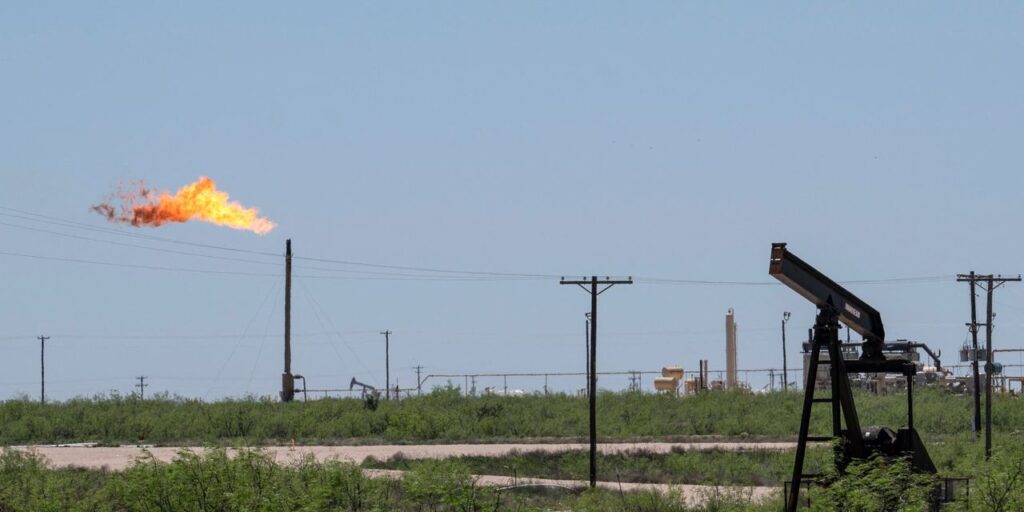Oil prices finished higher on Wednesday, buoyed by renewed worries over the potential for market disruptions in the Middle East, after losing much of their Israel-Hamas war premium during three consecutive session declines.
Prices had been bogged down in early dealings as the trouble in the Middle East has yet to impact the oil industry in the region, and after U.S. government data revealed weekly gains in domestic crude and gasoline inventories.
Price action
-
West Texas Intermediate crude for December delivery
CL00,
+1.34%CL.1,
+1.36%
climbed by $1.65, or 2%, to settle at $85.39 a barrel on the New York Mercantile Exchange. -
December Brent crude
BRNZ23,
the international benchmark, added $2.06, or 2.3%, to $90.13 a barrel on ICE Futures Europe. Both Brent and WTI crude on Tuesday posted a third consecutive session decline. -
November gasoline
RBX23
edged up by 0.7% to $2.28 a gallon on Nymex, while November heating oil
HOX23
lost 0.5% at $3.03 a gallon. -
November natural gas
NGX23
gained 1.3% to $3.01 per million British thermal units ahead of U.S. supply data due out Thursday.
Market moves
“Trading is being driven more by global factors like political developments in the Middle East more than weekly inventory data,” said Colin Cieszynski, chief market strategist at SIA Wealth Management.
At this point, oil continues to attract significant support above the $75 to $80 level, and “unless something significant happens on the supply, demand or political side, this upward trend remains intact,” he told MarketWatch.
WTI crude futures, the U.S. benchmark, had settled at $82.79 a barrel the day before the Hamas attack on Israel on Oct. 7 and peaked at a settlement high above $89 a barrel late last week, according to FactSet data. U.S. benchmark prices have given up some of the gains seen since the start of the war.
Disappointing data on European economic activity helped weigh on oil prices Tuesday, as did the release of more Hamas hostages and the delay of the expected Israeli ground invasion of Gaza.
“‘The crux of the matter is that there has been no interruption in the Middle East’s oil supply.’”
“The crux of the matter is that there has been no interruption in the Middle East’s oil supply,” said Stephen Innes, managing partner at SPI Asset Management, in market commentary.
Tyler Richey, co-editor at Sevens Report Research, pointed out that during Wednesday’s session, oil futures briefly plunged to new session lows after a preliminary news headline crossed the wires about Israel agreeing to delay a ground invasion of Gaza, but reports then said the provided reason for the delay was that the Israeli military was awaiting the arrival of U.S. missile support.
All of that “suggests an invasion is still imminent — just not right at this moment,” Richey said.
Supply data
On Wednesday, the U.S. Energy Information Administration reported weekly increases in domestic crude and gasoline supplies but declines in distillate stockpiles.
U.S. commercial crude inventories climbed by 1.4 million barrels for the week ending Oct. 20, the EIA said.
Macquarie forecast a climb of 1.1 million barrels. Late Tuesday, the American Petroleum Institute reported a weekly decline in U.S. crude supplies of 2.7 million barrels, according to sources citing the data.
The EIA report also revealed a supply increase of 200,000 barrels for gasoline, while distillate stockpiles declined by 1.7 million barrels. Macquarie forecast inventory decreases of 1.3 million barrels for gasoline and 3.3 million barrels for distillates.
An implied measure of consumer gasoline demand, known as total motor gasoline supplied, was “largely steady with its smoother four-week moving average rising to a more-than-one-month-high,” said Sevens Report’s Richey. “That firming demand metric amid an unexpected drop in refinery runs last week is likely to result in some near-term pressure on supply, which is bullish for energy prices.”
Crude stocks at the Cushing, Okla., Nymex delivery hub rose by 200,000 barrels for the week, the EIA said, while domestic petroleum production remained at 13.2 million barrels per day.
Read the full article here

